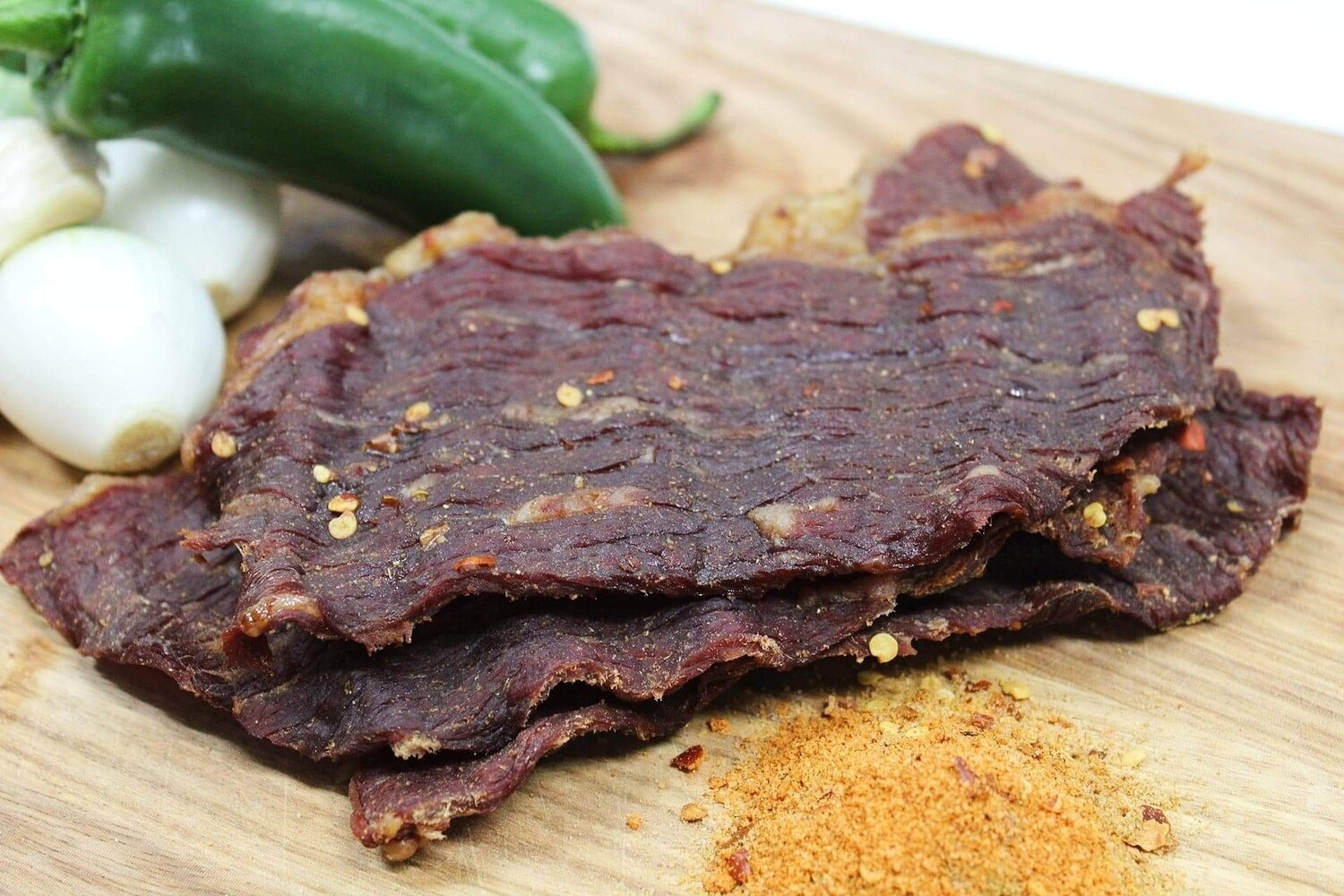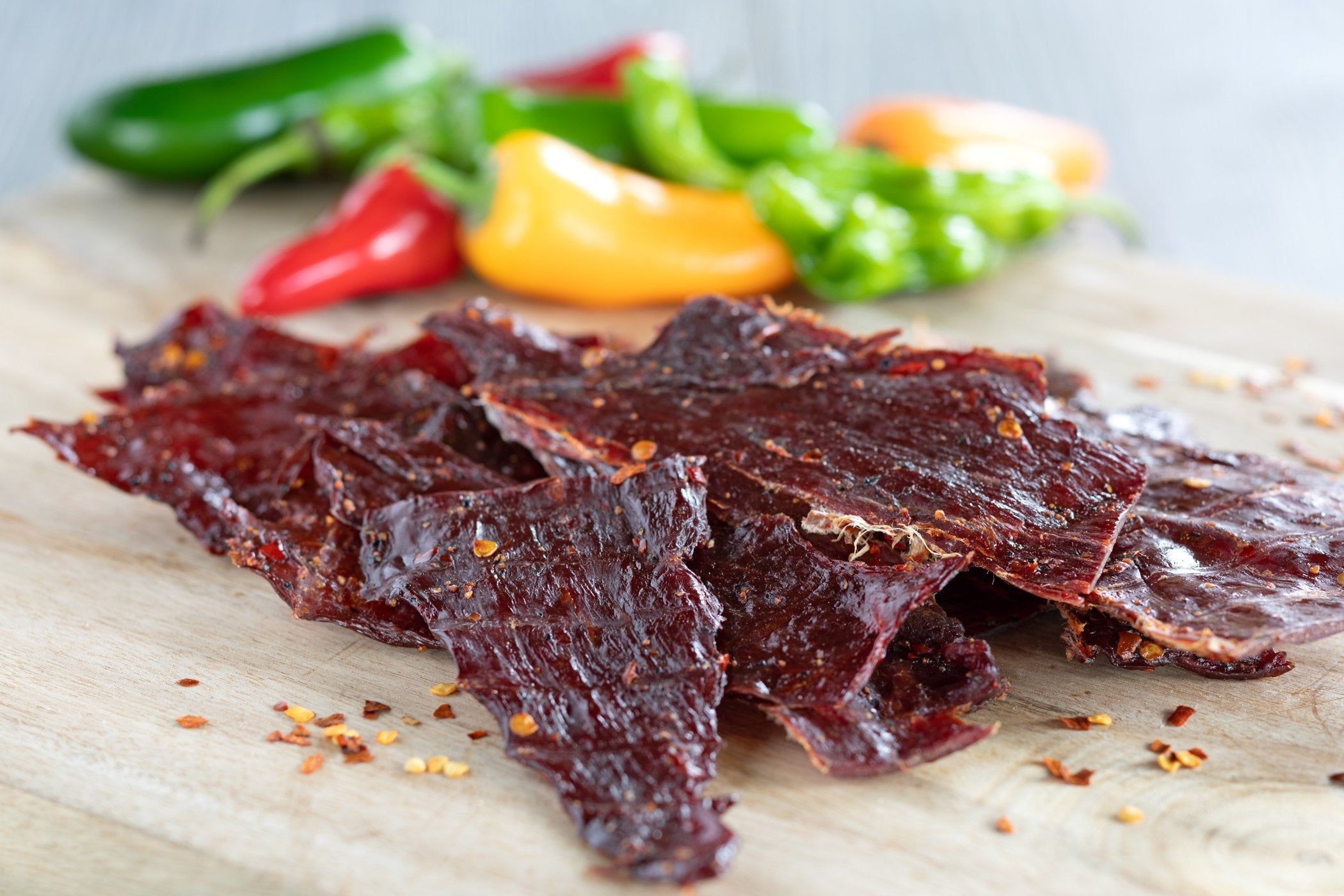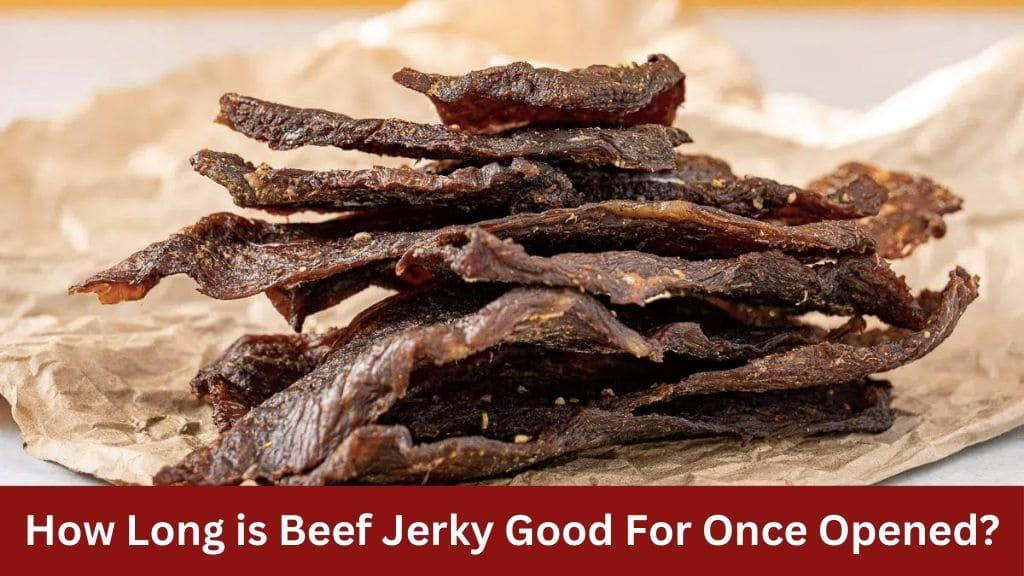Beef jerky is a popular snack known for its long shelf life and high protein content. However, once the package is opened, its longevity becomes a concern. In this comprehensive guide, we will explore the factors affecting the shelf life of opened beef jerky and provide tips on how to ensure its freshness for as long as possible.
Understanding the Shelf Life of Beef Jerky
:max_bytes(150000):strip_icc()/beef-jerky-GettyImages-1401669042-20ef02a12bdd46e0abd40ede257b3fe6.jpg)
Firstly, it’s important to recognize that beef jerky is a dehydrated meat product. This dehydration process removes moisture from the meat, making it less susceptible to bacterial growth and spoilage compared to fresh meat. However, once the package is opened, the jerky becomes exposed to external elements, which can impact its shelf life.
The primary factors influencing the shelf life of opened beef jerky include exposure to air, moisture, and temperature. Oxygen in the air can lead to oxidation, causing changes in flavor and texture over time. Even small amounts of moisture can create an environment conducive to microbial growth, leading to spoilage. Additionally, high temperatures can accelerate the degradation process, hastening the development of off-flavors and potentially harmful bacteria.
Recommended Consumption Timeline

The recommended consumption timeline for opened beef jerky outlines the optimal period during which the jerky maintains its best quality and flavor after the package has been opened.
Ideally, beef jerky should be consumed within a few days of opening the package to ensure the freshest taste and texture. During this initial window of freshness, the jerky retains its original flavor profile and tenderness, providing the most enjoyable eating experience.
While the freshness window is relatively short, beef jerky can still be safe to eat for an extended period if stored properly. By following appropriate storage practices, such as sealing the package tightly and keeping it in a cool, dry place, the jerky can remain edible for several weeks to months.
Storing Opened Beef Jerky

- Air-Tight Packaging: After opening the original packaging, it’s crucial to transfer the beef jerky into an air-tight container or resealable bag. This step helps minimize exposure to oxygen, which can lead to oxidation and deterioration of the jerky’s flavor and texture.
- Cool, Dry Environment: Storing beef jerky in a cool, dry place is paramount for preserving its shelf life. Avoid areas with high humidity or fluctuations in temperature, as moisture and heat can accelerate spoilage. Cupboards, pantries, or refrigerators are ideal storage locations that provide a stable environment for the jerky.
- Protection from Light and Heat: Exposure to direct sunlight or heat sources should be avoided, as they can hasten the degradation of beef jerky. Store the jerky away from windows, stoves, or other heat-emitting appliances to maintain its quality.
- Refrigeration or Freezing: While not always necessary, refrigeration or freezing can further extend the shelf life of opened beef jerky. If you don’t plan to consume the jerky within a few days, consider storing it in the refrigerator or freezer. Be sure to use freezer-safe bags or containers to prevent freezer burn and maintain freshness.
- Proper Sealing: Ensure that the packaging is tightly sealed after each use to prevent air exposure and moisture ingress. Proper sealing helps preserve the jerky’s flavor, texture, and overall quality for an extended period.
Signs of Spoilage

- Smell: One of the first signs of spoilage is a noticeable change in odor. Fresh beef jerky has a distinct, savory aroma, while spoiled jerky may emit a foul or unpleasant smell. If the jerky smells rancid, sour, or off-putting, it’s best to discard it to avoid potential foodborne illness.
- Texture: Spoiled beef jerky often undergoes changes in texture that are perceptible to the touch. While fresh jerky is typically firm yet tender, spoiled jerky may become excessively hard, mushy, or slimy. Any significant alteration in texture from its original state indicates spoilage and renders the jerky unfit for consumption.
- Visual Inspection: Visual cues can also help identify spoiled beef jerky. Look for signs of mold growth, discoloration, or unusual spots on the surface of the jerky. Mold formation is a clear indication of microbial contamination and poses health risks if consumed. Additionally, any abnormal discoloration, such as darkening or greenish hues, may signal spoilage and should be avoided.
- Presence of Condensation: Condensation inside the packaging is a telltale sign that moisture has penetrated the sealed container, compromising the jerky’s safety and freshness. Moisture promotes bacterial growth and accelerates spoilage, making the jerky unsafe to eat. If you notice any moisture buildup or droplets inside the packaging, it’s best to discard the jerky immediately.
- Taste Test: While not always reliable, a small taste test can help confirm suspicions of spoilage. If the beef jerky tastes sour, bitter, or has an unusual flavor, it’s a strong indicator that it has gone bad. However, exercise caution when tasting potentially spoiled food, as consuming contaminated jerky can lead to foodborne illness.
Risks of Consuming Spoiled Beef Jerky

- Food Poisoning: Spoiled beef jerky may harbor pathogenic bacteria such as Salmonella, E. coli, or Listeria monocytogenes, which can cause foodborne illnesses. When consumed, these bacteria can multiply in the digestive tract, leading to symptoms such as nausea, vomiting, diarrhea, abdominal cramps, and fever. The severity and duration of food poisoning symptoms can vary depending on the type and amount of bacteria ingested.
- Gastrointestinal Distress: Consumption of spoiled beef jerky can result in gastrointestinal distress, including stomach pain, bloating, and discomfort. The presence of toxins produced by bacteria during spoilage can irritate the gastrointestinal lining, causing inflammation and digestive disturbances.
- Dehydration: In cases of severe food poisoning caused by consuming spoiled beef jerky, persistent vomiting and diarrhea can lead to dehydration. Dehydration occurs when the body loses more fluids than it takes in, potentially resulting in electrolyte imbalances, weakness, and fatigue. Severe dehydration requires prompt medical attention to prevent complications.
- Compromised Immune Function: Individuals with weakened immune systems, such as the elderly, young children, pregnant women, and those with underlying health conditions, are particularly vulnerable to the effects of consuming spoiled beef jerky. Their compromised immune function may increase the risk of severe illness and complications from foodborne pathogens.
- Long-Term Health Consequences: In some cases, foodborne illnesses resulting from consuming spoiled beef jerky can have long-term health consequences, including kidney damage, neurological disorders, and autoimmune conditions. Certain pathogens may also pose a risk of chronic infection or persistent symptoms even after the initial illness resolves.
Conclusion
The shelf life of opened beef jerky depends on various factors, including storage conditions and exposure to air, moisture, and heat. While beef jerky can remain safe to eat for a limited time after opening, it is essential to consume it within a few days for optimal freshness. By following proper storage guidelines and recognizing signs of spoilage, you can enjoy delicious and safe beef jerky for longer periods. Remember to prioritize food safety and discard any jerky that shows signs of spoilage to avoid potential health risks.





